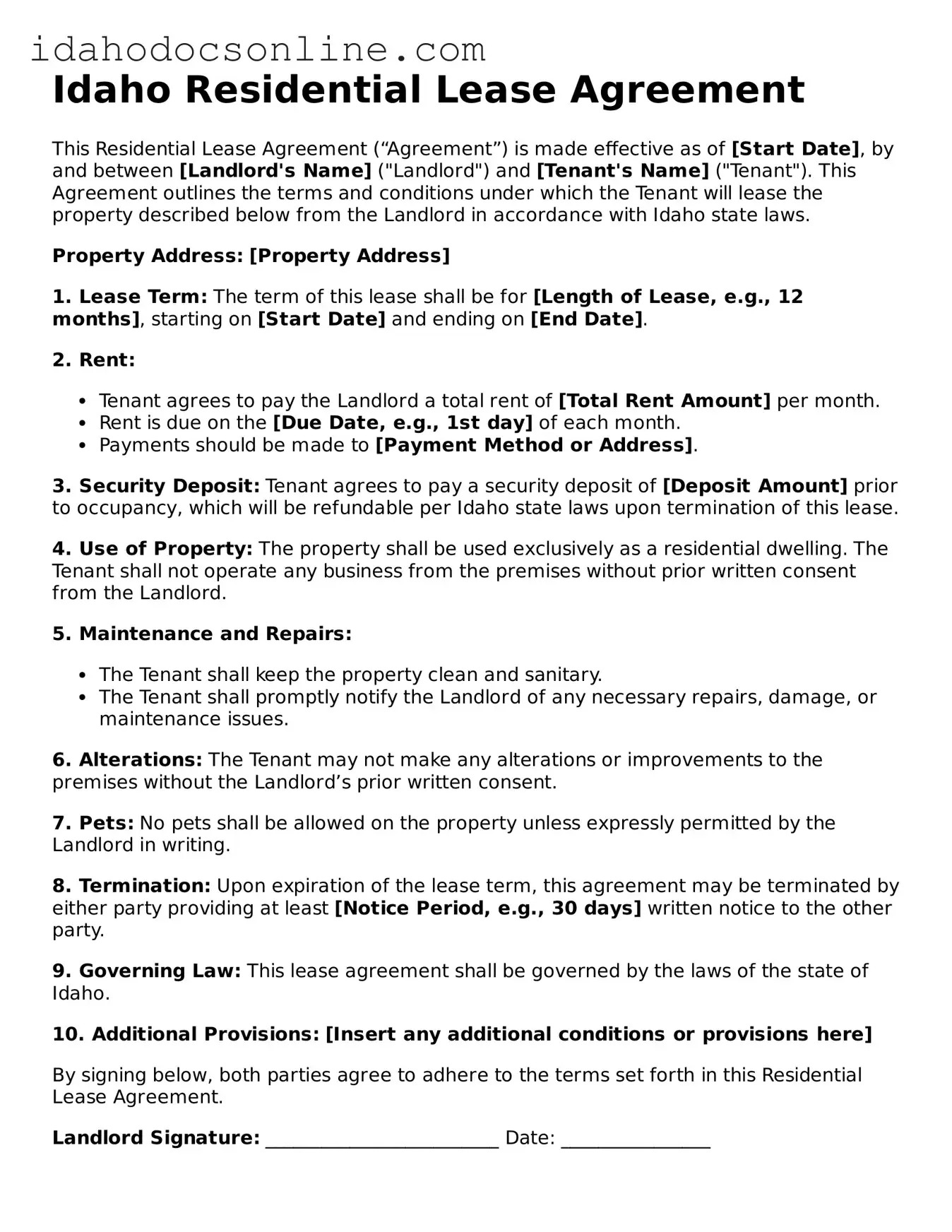Idaho Residential Lease Agreement
This Residential Lease Agreement (“Agreement”) is made effective as of [Start Date], by and between [Landlord's Name] ("Landlord") and [Tenant's Name] ("Tenant"). This Agreement outlines the terms and conditions under which the Tenant will lease the property described below from the Landlord in accordance with Idaho state laws.
Property Address: [Property Address]
1. Lease Term: The term of this lease shall be for [Length of Lease, e.g., 12 months], starting on [Start Date] and ending on [End Date].
2. Rent:
- Tenant agrees to pay the Landlord a total rent of [Total Rent Amount] per month.
- Rent is due on the [Due Date, e.g., 1st day] of each month.
- Payments should be made to [Payment Method or Address].
3. Security Deposit: Tenant agrees to pay a security deposit of [Deposit Amount] prior to occupancy, which will be refundable per Idaho state laws upon termination of this lease.
4. Use of Property: The property shall be used exclusively as a residential dwelling. The Tenant shall not operate any business from the premises without prior written consent from the Landlord.
5. Maintenance and Repairs:
- The Tenant shall keep the property clean and sanitary.
- The Tenant shall promptly notify the Landlord of any necessary repairs, damage, or maintenance issues.
6. Alterations: The Tenant may not make any alterations or improvements to the premises without the Landlord’s prior written consent.
7. Pets: No pets shall be allowed on the property unless expressly permitted by the Landlord in writing.
8. Termination: Upon expiration of the lease term, this agreement may be terminated by either party providing at least [Notice Period, e.g., 30 days] written notice to the other party.
9. Governing Law: This lease agreement shall be governed by the laws of the state of Idaho.
10. Additional Provisions: [Insert any additional conditions or provisions here]
By signing below, both parties agree to adhere to the terms set forth in this Residential Lease Agreement.
Landlord Signature: _________________________ Date: ________________
Tenant Signature: _________________________ Date: ________________
